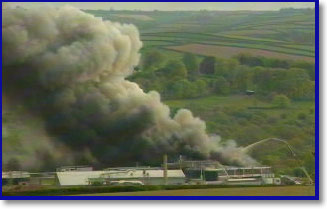
PR Crisis Management and Communications Contingency Planning: How To Ensure Corporate Survival
By John Hicks M.IDM, Managing Director of Headline Promotions, Press & PR
My previous article on PR Crisis Management attracted a number of responses from people in small to medium sized businesses and organisations. Generally, they were interested in how my advice fitted into an overall strategy.
I have replied to all enquiries but here are some general pointers to develop my article further.
There are many resources on-line about devising a Crisis Management Plan (CMP). A key component of every contingency plan is the extent to which an organisation is willing and ready to communicate effectively and clearly with each constituency (stakeholder) group within its sphere of influence and operations, including internal messages to employees, their families, other relatives and input from various support groups that may be deemed necessary to help people cope with the crisis at hand.
The following are some suggested areas for consideration within your Plan. It will not contain all of the components, contingencies or options required by each unique type of organisation for its survival planning process and procedures.
1. Firstly, does your organisation have a written CMP?
This is the building block upon which your PR CMP will be developed.
Equally important, is this plan current and is it updated regularly, or as conditions change? I did some work for a trade association and found that their CMP was so out of date that it related to their previous headquarters building!
Is there a crisis management group, committee or task force?
Are managers and employees aware of the plan and trained in its use?
Does your firm conduct frequent drills and disaster exercises to test the plan and those who would implement it?
Is every group, division, work unit and location required to provide input to the plan and feedback on its effectiveness in actual practice?
Are suppliers, vendors, channel partners and other third parties essential to the survival and success of the company aware of the plan and their roles?
Does the organisation have a single point of contact, a designated "Crisis Manager" responsible for overall crisis management and communications?
2. Are emergency contact and notification procedures an integral part of the plan?
Is there a multi-network notification system, and alternatives, for managers and employees to use if standard systems are down, too busy or inoperative?
Is there a separate, formal notification plan for employees' immediate families and close relatives in the event of loss of life, missing personnel, etc.?
Does the company have a discrete notification system for caregivers, day care operators and others upon whom employees may depend for family member support?
Is there an employee "hot line" company personnel can call in the event of emergencies (or an intranet or website, fax broadcast service, wireless notification procedure, etc.)?
Does the organisation have a plan of action, or chart that specifies whom should be contacted, at what locations, and listing multiple (current) phone/cellular/pager numbers, based on the severity of potential emergency scenarios?
Are these notification lists kept current and do they include key groups such as:
- Shareholders- Customers- Key media and market analysts- Local government officials- Regulatory agencies- Law enforcement personnel- Union officials- Engineering, operations and facilities personnel- Architects and drawings/plans/blue prints of all company buildings- Insurance contacts and policies- Major suppliers and vendors- Consultants: Lawyers, industrial hygienists, health safety & environmental consultants that can be called in to cope with adversarial questions and deal with matters within their areas of expertise.
3. Does the organisation have an updated CMP that can address a wide range of potential issues and concerns?
Does this plan include what should be discussed, in how much detail and to whom information should be released following a crisis?
One of the suggestions that came forward from my previous article is that organisations should have a "silent" website that can be activated on short notice, to provide information during an emergency to everyone in the community? I like this idea very much!
Is the organisation prepared to respond immediately to the media (with sample news release drafts covering common contingencies and/or fill-in-the-blanks press templates, so authorised personnel can use these tools to quickly "plug-in-and-play" factual information as required.)?
Are written guidelines in place instructing those dealing with an issue on how to gather information about a crisis, or potential crisis?
Have selected senior managers, or other designated spokespersons, been media trained?
Is there a readily available and easily accessible database of information about the company in case of emergencies (updated company background information on a website or in hard copy form)?
Is the organisation prepared to address product or facility safety issues forthrightly and in a timely and factual manner?
Does the company have an updated health, environmental & safety record for review and dissemination?
If public health is in jeopardy, based on a product, action or mistake of the organisation and/or its affiliates, or due to contamination issues, is the organisation ready to alert the appropriate audiences (maybe including public authorities and the local community) and take corrective steps?
If a service provision company is involved, does the firm have a messaging plan focusing on the need to inform customers or the public concerning service availability and continuity?
If the crisis is related to the financial health of the company, does the organisation have a plan to inform all key stakeholders (i.e., employees, customers, investors, the banking and investment community, financial analysts and the public) with pertinent details they will need to make informed decisions - whether or not the firm is public or private (a classic example for publicly-held companies is whether or not a costly crisis qualifies as a "material event" that must be publicised.)?
I hope this illuminates the discussion still further. Either way, I welcome your further thoughts and questions to me at john@headlinepromotions.co.uk



